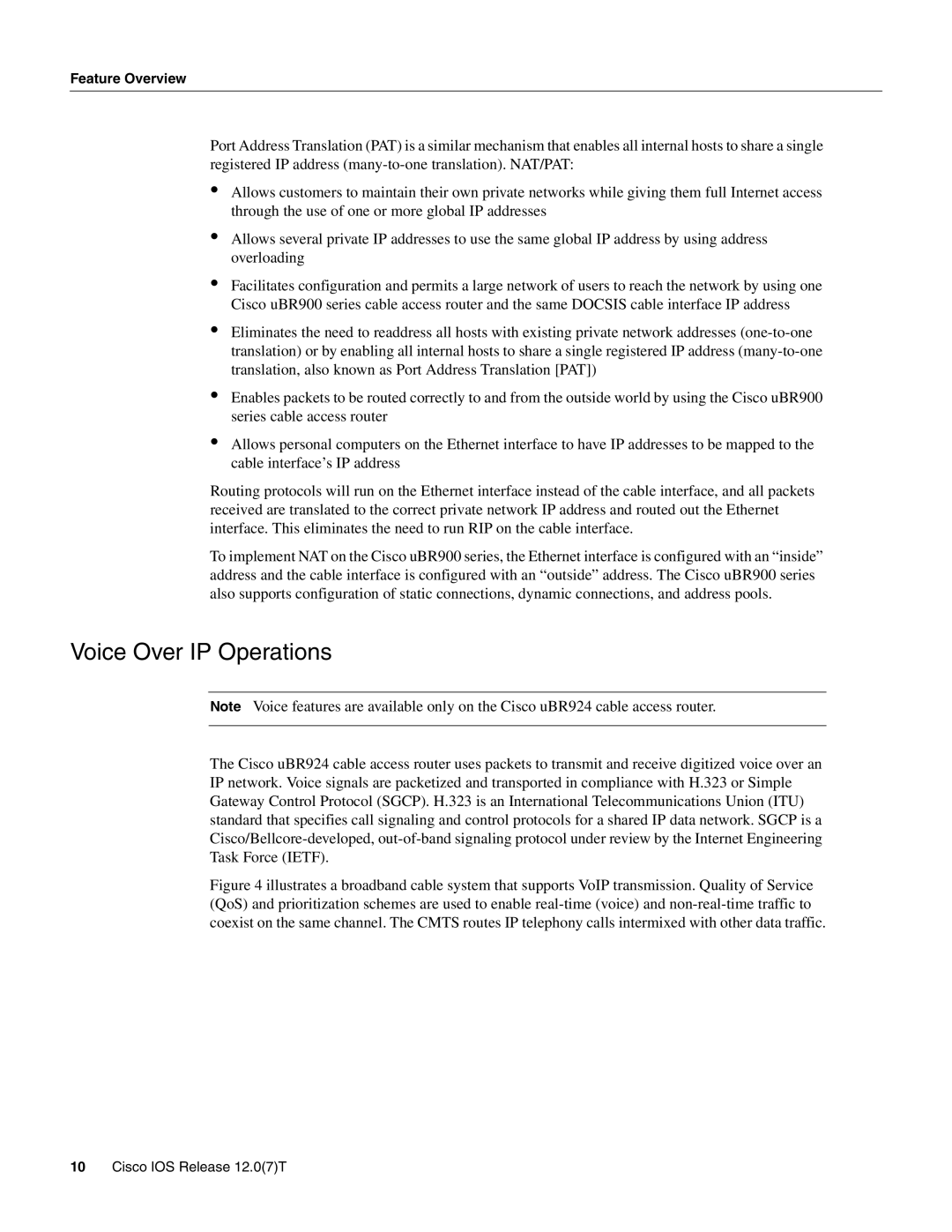
Feature Overview
Port Address Translation (PAT) is a similar mechanism that enables all internal hosts to share a single registered IP address
•Allows customers to maintain their own private networks while giving them full Internet access through the use of one or more global IP addresses
•Allows several private IP addresses to use the same global IP address by using address overloading
•Facilitates configuration and permits a large network of users to reach the network by using one Cisco uBR900 series cable access router and the same DOCSIS cable interface IP address
•Eliminates the need to readdress all hosts with existing private network addresses
•Enables packets to be routed correctly to and from the outside world by using the Cisco uBR900 series cable access router
•Allows personal computers on the Ethernet interface to have IP addresses to be mapped to the cable interface’s IP address
Routing protocols will run on the Ethernet interface instead of the cable interface, and all packets received are translated to the correct private network IP address and routed out the Ethernet interface. This eliminates the need to run RIP on the cable interface.
To implement NAT on the Cisco uBR900 series, the Ethernet interface is configured with an “inside” address and the cable interface is configured with an “outside” address. The Cisco uBR900 series also supports configuration of static connections, dynamic connections, and address pools.
Voice Over IP Operations
Note Voice features are available only on the Cisco uBR924 cable access router.
The Cisco uBR924 cable access router uses packets to transmit and receive digitized voice over an IP network. Voice signals are packetized and transported in compliance with H.323 or Simple Gateway Control Protocol (SGCP). H.323 is an International Telecommunications Union (ITU) standard that specifies call signaling and control protocols for a shared IP data network. SGCP is a
Figure 4 illustrates a broadband cable system that supports VoIP transmission. Quality of Service (QoS) and prioritization schemes are used to enable real-time (voice) and non-real-time traffic to coexist on the same channel. The CMTS routes IP telephony calls intermixed with other data traffic.
10Cisco IOS Release 12.0(7)T
